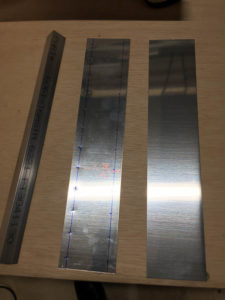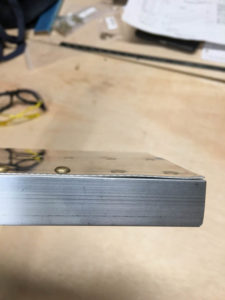Yesterday with the assistance of my daughters, I was able to complete the control surface practice project. I love how it went together, and all the little mistakes I made along the way. Honestly this was exactly what I was expecting with a practice project to help figure out where I needed some additional tooling, education, or simple practice!
I continue to buy an additional tool here and there, and the most recent that I’m thrilled with are my scotch bright disks for my air die grinder. I have been more inclined to use them than my scotch bright wheel in my bench grinder. I feel like I have more control on the pads vs the bench grinder, but that may change as I get more experience and begin to work with more parts.
I ended up mangling a bunch of rivets as I attached the skins to the spars. This required me to drill out a few rivets and use some “Oops” rivets. Luckily that worked out perfectly.
Bending the radius in the leading edge wasn’t as clean as I really wanted it to be. Honestly I just couldn’t bend it enough that there wasn’t pillowing. I even attempted to use the edge forming tool, but that didn’t seem to help much. Finally I just went with it and with the help of my youngest daughter, started to blind-rivet the leading edge together. Daddy and daughter did a great job on 4/5 rivets, however one didn’t seat very well.
Not a huge deal, but I’m planning to drill out all 5 of the blind rivets when my removal tool arrives and install all new blind rivets. (also debating drilling additional holes and adding more rivets to make a better seam.). This is the time to experiment and get better right?


